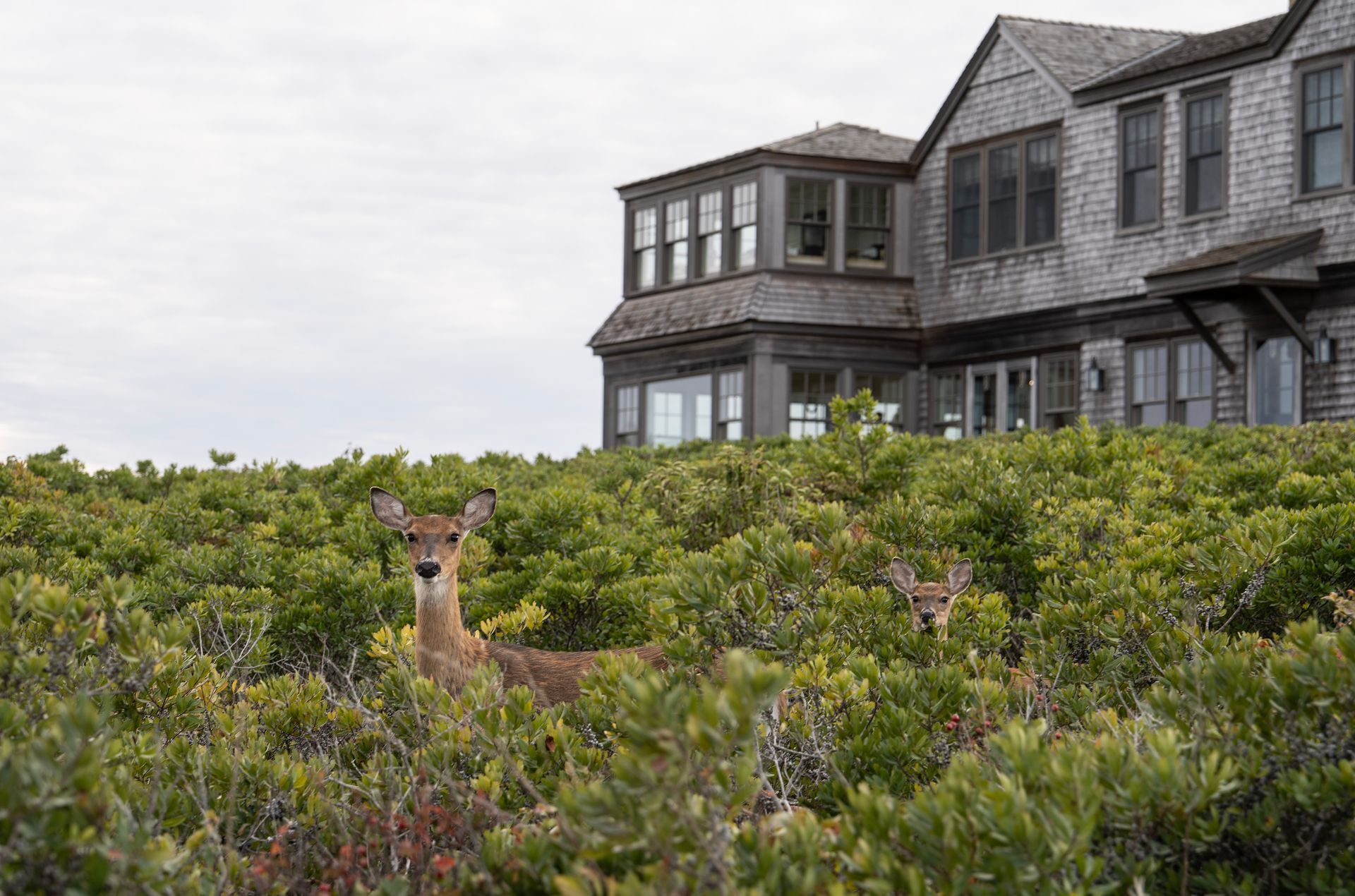Jaws at 50
The Nantucket Film Festival dives into the making of the 1975 Benchley classic.
Interview by John Stanton
Photos Courtesy of Rob Benchley, Wendy Benchley and the Nantucket Film Festival
It is late one fine summer night, at the tail end of a beach party, when a young woman decides to go skinny-dipping. We see her in a wide shot, calling to a friend on the shore to join her in the ocean. The camera’s point of view changes. We can see her legs treading water, illuminated by the moonlight filtering down from the surface.
Then the music. If you have seen the movie Jaws, you can hear those two notes, an F and an F-sharp, even as you read this. The music looms in the darkness. It is the clicking of a roller coaster as it reaches the apex of the hill. Then the terrible screams as the shark attacks and the woman is dragged furiously back and forth, struggling and calling for help until she is pulled under. It is almost a more frightening moment when the water becomes smooth and quiet again and we understand that the ocean does not care about us.
Jaws terrified audiences when it hit theaters 50 years ago. The reception from audiences is said to have surprised director Steven Spielberg, as it created a level of fear not seen or heard since Orson Welles’ War of the Worlds. To say that the struggles to get it made were worth it in the end is an understatement. It became a legitimate phenomenon. Jaws rang up the highest opening box office numbers of all time, until two years later when it gave way to George Lucas’ Star Wars.
It is also one of those rare movies that have become part of the pop culture landscape. It is as relevant and entertaining today as it was in the summer of 1975.The movie was based on a novel of the same name by Peter Benchley. He had grown up spending summers in Sconset, fishing with his brother and father, who chartered Gibby Nickerson and his boat until he eventually bought his own boat—called Nibble. “We’d go 30-miles-plus off the south shore looking for swordfish,” Benchley’s brother Nat remembered. “We considered that we grew up on the ocean even though we had to go back to the mainland when school opened again."
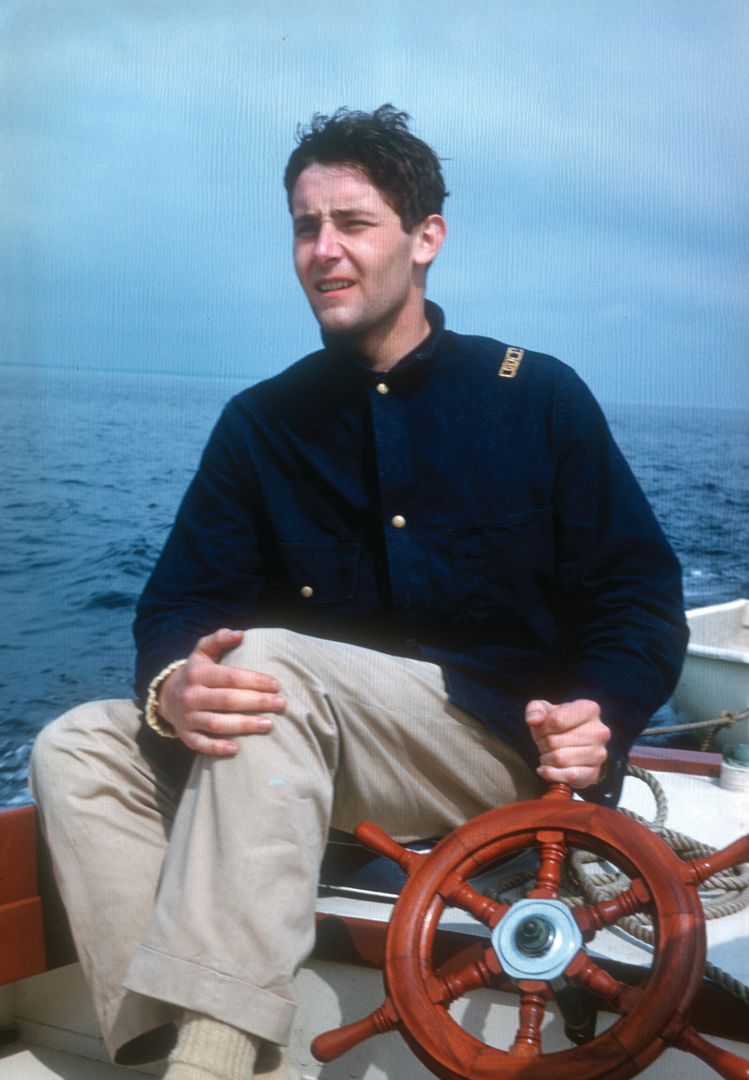
Peter Benchley, who died in 2006, had worked at the Washington Post and Newsweek magazine, and he had written speeches for President Lyndon B. Johnson. They were a family of writers. His grandfather, Robert, was a humorist whose work appeared in The New Yorker magazine, and was a member of the legendary group of writers called the Algonquin Round Table. His father Nat wrote the novel The Off-Islanders, which later became the film, The Russians Are Coming, The Russians Are Coming.
When Benchley was a boy, his father wanted to discourage him from being a writer, and one summer paid him what he was making as a landscaper’s assistant to just sit and write all day, thinking he would give in to boredom. Instead, he learned the discipline writing requires.
The plan backfired. He had found his place. In 1972, he was introduced to Tom Congdon, an editor at the publishing house Doubleday and a longtime Nantucket summer resident. He told Congdon that he had two ideas for novels. The first was a modern-day pirate story; the second was a fish story about a shark that terrorizes a small beach community. Congdon gave him a $1,000 advance to begin work on the fish story.
“He felt this was his last dance, writing this novel, because he had decided not to go back to Newsweek,” Benchley’s wife, Wendy, said. The couple was living in Pennington, New Jersey. Peter wrote in an office he rented above the local furnace supply shop. The day came when Congdon called looking for the four chapters he was owed. Benchley hurriedly sat down and cranked them out.
In his first approach, he played the story as a comedy. “The idea of a humorous man-eating shark was a perfect oxymoron,” Nat said. Congdon rejected the idea. He suggested Benchley rewrite the first four chapters and play it straight. It was a simple story: a small beachside community on the cusp of tourist season when a rogue shark begins to kill swimmers. The book looked at how the town dealt with the shadow of losing summertime business. In the book, the shark was secondary to the workings of a small town.
The book was about the small town’s reaction,” Wendy Benchley said. “Peter and his parents knew the importance of the summer season on Nantucket, about a short time frame to make money if you were going to survive the winter.” Peter Benchley did not know what to expect while writing those first four chapters. “It was his first novel, and he was sure it wouldn’t be a success because it was a novel about a fish and who wants to read that? But other people with more experience in books and movies knew better,” Nat said.
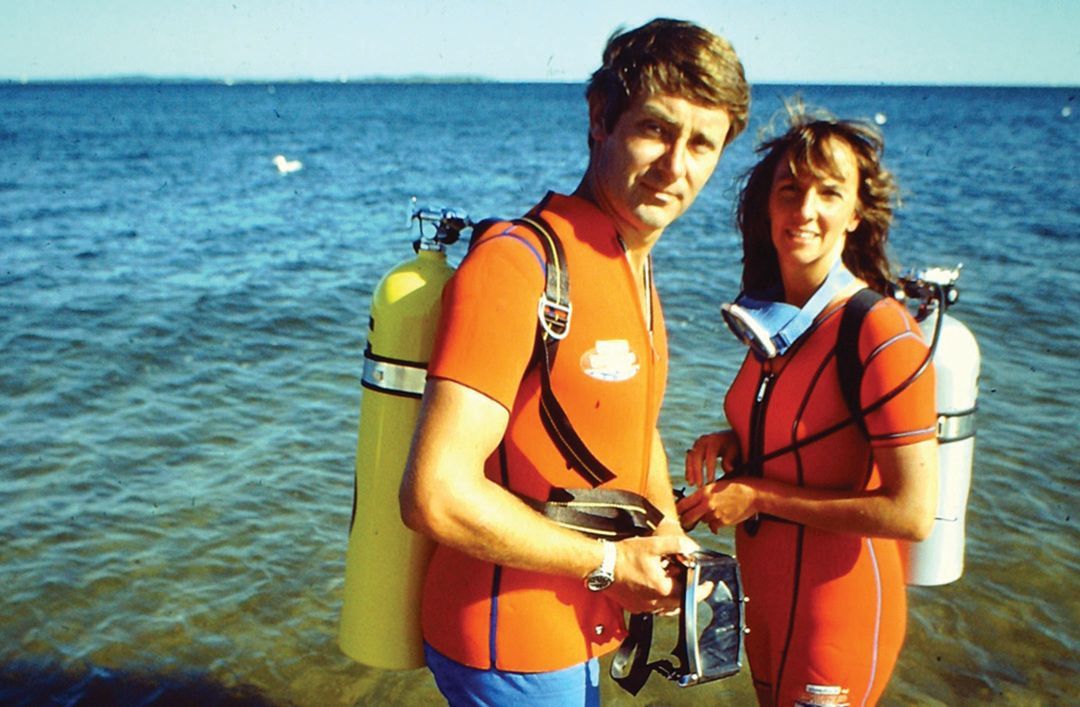
Hollywood producers Richard Zanuck and David Brown bought the rights to the book before it was even published, based on reading those four rewritten chapters.“ Peter’s agent told him Brown and Zanuck wanted to buy the movie rights. He said what do you mean? You can’t train a shark and you can’t make one that looks the same,” Nat said. “He was coming from a literary background and point of view. He had never seen a great white but had seen plenty of sharks. Still, the producers paid him a bunch of money for it so he took it.”
Zanuck and Brown talked to several directors and finally took a bet on a 27-year-old director named Spielberg, who had only a single film to his name. Spielberg brought in a friend and screenwriter named Carl Gottlieb to help rewrite the script. Both of the writers also act in the film, Benchley in a cameo playing a television reporter doing a report about the shark and Gottlieb playing the part of the local newspaper editor. In the long run, it gave Spielberg what most directors do not have—the right of final cut, which means the director gets to decide on the final version of his films.
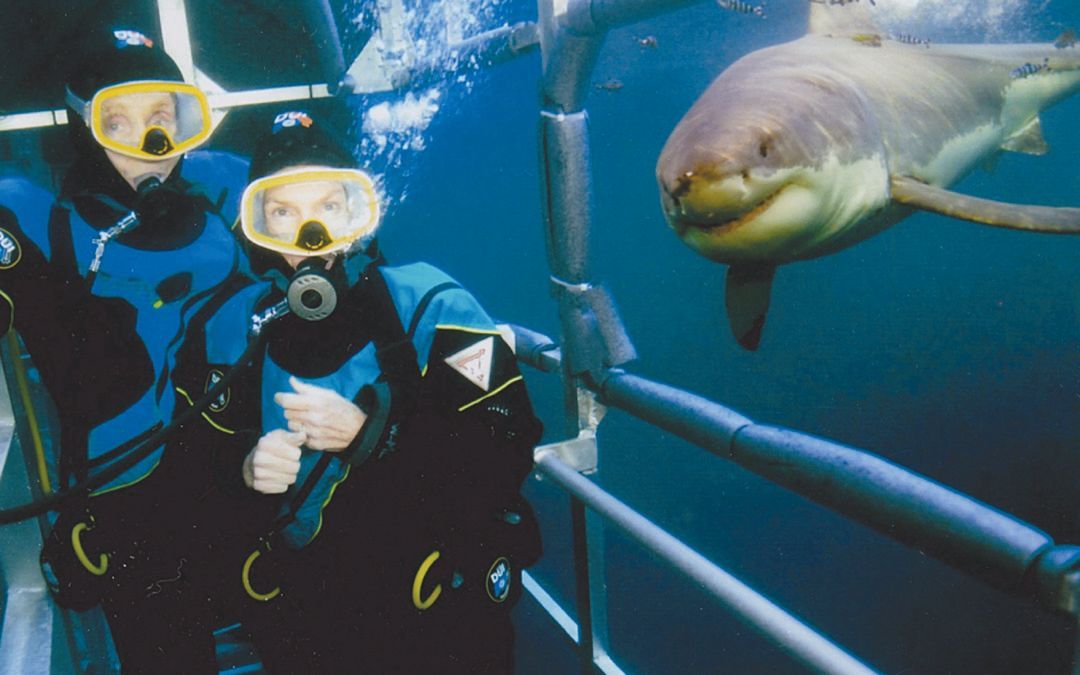
The new Jaws@50 documentary explores the trials of getting the film made and the reaction to its success, through the memories and personal footage of Spielberg. It also features directors like Lucas talking about how Jaws influenced the movie-making business. “The success of Jaws gave him creative license and control to manage his stories,” said Justin Falvey, president of Spielberg’s company Amblin Entertainment and executive producer of the documentary. Amblin partnered with National Geographic on the film.
Jaws@50 will have its world premiere on June 20 on Martha’s Vineyard, where much of the film was shot, and will then come to Nantucket as part of the Nantucket Film Festival. The festival will screen both the documentary and the original film. Other documentary films have explored the drinking and the sniping between two of its main actors—Robert Shaw and Richard Dreyfuss—how the most famous line,“ We’re going to need a bigger boat,” was an ad lib, and a list of anecdotes that seemingly know no end. Ian Shaw, the son of Robert Shaw, who plays the local fisherman and shark hunter Quint, even wrote a play called The Shark Is Broken, in which he plays his late father.
“I think it’s really the perspective of 50 years that makes this film really special,” said Laurent Bouzereau, whodirectedJaws@50. “To me, that’s Steven opening up his heart, his archive, that makes the film unique. Yes, we’ve heard the stories, but this is a very unique perspective.”
Falvey agreed. He said Jaws@50 explores the making of Jaws at a level that goes well beyond fanboy obsessions thanks to Spielberg’s memories and personal archive. “He was a 27-year-old talent, but a vulnerable filmmaker,” Falvey said. “This is a pretty inspiring story about perseverance in what was a difficult time for him.”
One of the things that Spielberg brought to the movie was his decision to use local folks on Martha’s Vineyard in the film. The most memorable example is Mrs. Kintner, the mother of a boy who is killed by the shark. In her big scene, she confronts Police Chief Martin Brody (played by Roy Scheider) and slaps him in the face. Kintner was played by Lee Fierro, who co-founded the Island Theatre Workshop. She died in 2020, at 91 years old, of COVID.
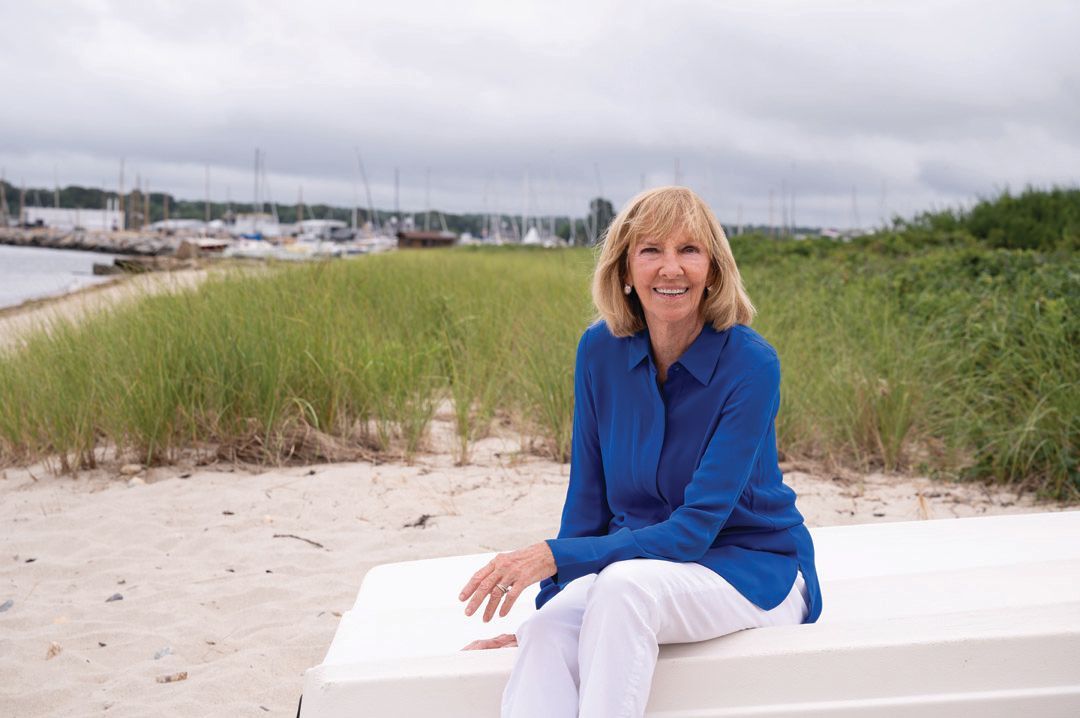
Spielberg, I think, did a magnificent job with all the local people from Martha’s Vineyard in the film,” said Wendy Benchley. “It gives the film areal feel of a close-knit community. I think there were only six or seven professional actors.” Jaws showed Spielberg’s ability to bring humanity to a thriller. The characters share some version of a journey home. It would be something he would return to in his films for the next decade. After they defeat the shark, our two remaining heroes are paddling into shore on a part of the wrecked boat, named Orca. “I always hated the water before,” said Brody. “I can’t imagine why.”
It is a very Spiebergian ending. The shark, of course, is the villain in Jaws. It must be that way. This is a simple, very well-made film, and needs an obvious villain and some heroes. Part of the reaction to the film was an uptick in shark tournaments. Both Benchley and Spielberg later said they regretted the popular notion of sharks as villains.“ Peter was horrified that many people took the book and the movie as a license to kill sharks,” Wendy said. “He said many times that he would never write Jaws again the same way.”
The couple responded to the fallout from the film by getting involved in ocean conservation. Peter wrote articles about sharks, and the two of them went on cage dives off Australia to see great white sharks. Wendy is still very much involved in ocean conservation. She is an advisory trustee of the Environmental Defense Fund and on the board of Wild Aid. She calls the increase in both seals and sharks off Great Point a success story.“ Seals were protected 30 years ago, and it has taken that long for them to get their population back up to strength. And seals are sharks’ favorite food,” she said. “You would not go to the Serengeti and walk around in a bikini and sun tan lotion, because that is where lions live. It is the lions’ Serengeti, and we respect that. I think we should see sharks and the ocean in the same way.”




